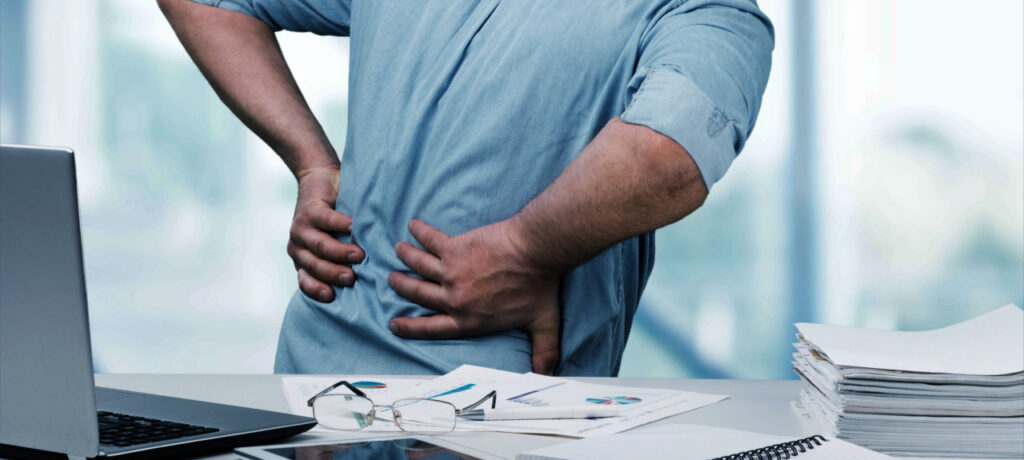Lower Back Injuries in Specific Sports

Exercise is an integral part of a healthy lifestyle, and sports are one approach many people choose to use to get their exercise.
Lower Back Injury: The lower back is subject to a great deal of strain in many sports. Sports that use repetitive impact (e.g., running), a twisting motion (e.g., golf), or weight loading at the end of a range of motion (e.g., weightlifting) commonly cause damage to the lower back.
- Causes: A violent or jerking motion or an over-extension of the back muscles usually causes back muscle strains, which causes one or more back muscles, tendons, or ligaments to stretch or tear. If left untreated or fully rehabilitated, it can eventually lead to chronic lower back pain. Another common cause of low back pain is a herniated disc. A herniated disc puts pressure on the disc’s outer fiber causing it to rip and the nucleus to rupture, resulting in symptoms of numbness and changes in reflexes.
THE WARM-UP SHOULD BE SPECIFIC TO THE SPORT PLAYED:
- Increase circulation gradually by doing some easy movement (such as walking) to increase blood circulation to the muscles and ligaments of the back.
- Stretch the lower and upper back and related muscles, including the hamstrings and quadriceps.
- Start slowly with the sports movements (e.g., swing the golf club, serve the ball).
Exercises for Lower Back Pain:
- Cat/Cow.
- Three-Way Child’s Pose.
- Posterior Pelvic Tilts.
- Supermans.
Why come to Physical Therapy?
- Physical Therapy plays an essential role in treating and preventing lower back pain. Physical Therapists will design a program based on an athlete’s condition that combines strengthening, stretching, and low-impact exercises. These exercises will help strengthen the muscles of the back that support the spine, which will decrease lower back pain, increase functionality and prevent further back pain in the future.
It is crucial to thoroughly warm-up and stretch before activities and work on good upright posture while standing, sitting, lifting, and performing exercises to remove additional stress on the spine to prevent re-injury. Proper technique will also reduce strain on the spinal structures.
Your Next Steps…
Schedule An Appointment
Receive A Custom Treatment Plan
Work Hard and Progress In Your Recovery
Recover & Enjoy Life Pain-Free!
